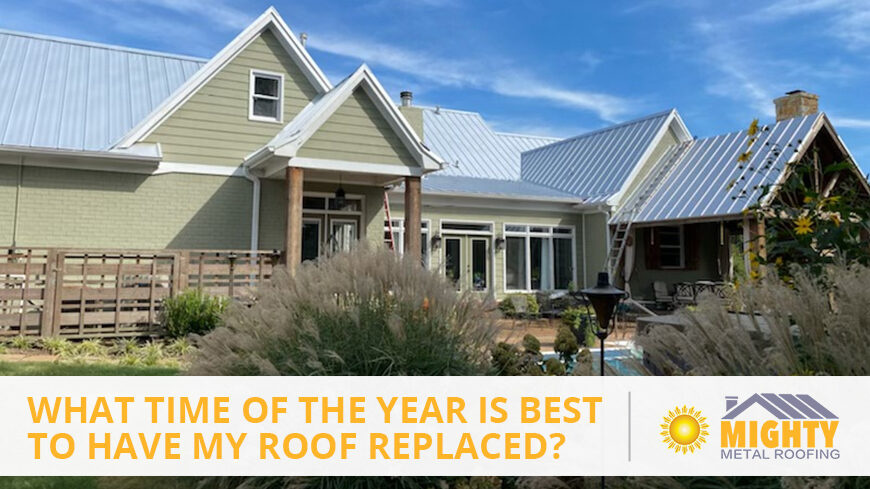What Time Of The Year Is Best To Have My Roof Replaced?


August 3, 2022
By: Admin
Roof Replacement
As a homeowner, chances are at some point in time you’ll be tasked with having to replace your roof. There are many factors that you must keep in mind while planning your roof installation, including what time of the year it is. The season you pick to replace your roof can affect many aspects of the roof installation, including the cost of the project and how long it will take to complete. Each season is faced with unique challenges and benefits when replacing your roof. The article breaks down the advantages and disadvantages of each season so you can properly plan your roof installation.
Spring (March, April, May)
Many homeowners consider replacing their roof in the spring due to the warmer, more enjoyable weather. Many roofing professionals say spring is the second best time of year to have your roof replaced. During the spring, there is often lower humidity and less snow than in the winter months. However, springtime is also faced with some challenges. The main challenge to having your roof replaced in the spring is the unpredictable weather, which can result in a longer installation.
Summer (June, July, August)
These months provide some of the best times to have your roof replaced. During this season, the weather is consistently warm, which makes installations easier. Summer is the most popular season to have your roof replaced due to the high chances of clear weather. Installing your roof in the summertime could even end up saving you money by being more energy efficient. However, if you wait until the peak of summer the weather conditions will be more challenging. The extreme heat could prevent roof installers from working, and it could also impact the installation of your roofing materials. Extreme heat can start to soften your asphalt shingles, which will make them less durable and more prone to damage.
Fall (September, October, November)
Fall is considered the best time to have your roof replaced due to a transition to cooler temperatures. The temperatures allow better working conditions for roof installers and allow them to finish the job on time. Even though there are many advantages to replacing your roof in the fall, there are also some disadvantages. Since many homeowners are in a rush to have their roofs replaced before winter, many roof installers are already booked for the season. If you’re wanting to have your roof replaced in the fall, it is best to plan a month or two to secure your spot on the schedule.
Winter (December, January, February)
Winter is the perfect time of year to get on a roofing contractor’s schedule since there aren’t many homeowners scheduling to have their roofs replaced. Since winter is a slow season, prices are typically lower and availability increases. The biggest disadvantage of winter is the weather. The cold temperatures cause shingles to lose some flexibility, and it becomes difficult to cut and insert the nails. Shingles require warmer temperatures for the thermal sealing to set, and with colder temperatures, it could take days or weeks. If the shingles get too cold, they can even break or crack during your roof’s installation. Also, snow and sleet can cause unsafe conditions for many workers to complete a roof installation.
No matter what season you decide to have your roof replaced, Mighty Metal Roofing can provide professional installation services and the highest-quality products for your roof installation. With over 25 years of roofing experience, Mighty Metal Roofing is the local midsouth roofing specialists that you can trust. We provide free roof estimates and roof inspections. We also have financing options available! Contact us today to get roofing cost estimates!

Roofing






